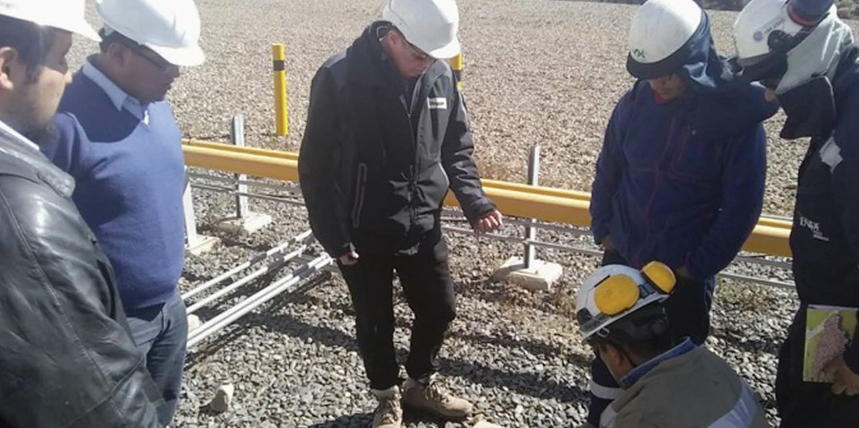First, let’s look at some industry-accepted definitions to establish context. Low voltage is anything below 1 kV. The common building-wiring voltages are 120, 240, 480, and 600 V. To the uninitiated, this can seem confusing and even ridiculous. Get across 600 V, and it can fry you like bacon, but in industry parlance, it is still low voltage. Put into perspective, low voltage must nonetheless be respected by following industry-standard safe working practices.
Above 1 kV, we enter the realm of medium voltage. Five thousand volts hardly sounds medium, but so it is. For organizational purposes on the power grid, systems like 4,160 V are no more than medium voltage. While the lower limit of this range is generally well accepted, definitions of the upper boundary differ. Generally, 66 kV begins the range into high voltage. However, in some contexts and in much of electrical instrumentation, this range is limited to 15 kV. Having defined the boundaries, this article will focus on medium voltage and the grounding of these systems.
Grounding medium-voltage systems is accomplished in two ways: by standard resistance grounding and by high-resistance grounding. The determining factor for which method is applied depends on available fault current.
- Systems may be reactance grounded, meaning that a reactor is installed to introduce an impedance into the circuit. This is preferred for protecting overhead circuits that are exposed to lightning and for rotating machinery where excessive ground fault currents will not develop.
- Grounding in industrial systems may include a resistor. The grounding conductor may also include a current transformer to activate a signal that a ground fault exists or to clear the circuit if a fault persists over a predetermined time. Such protection is not part of low-voltage grounding because not enough current will flow to make the current transformer effective. Systems above 15 kV are usually outdoors and not directly servicing rotating equipment and so may be solidly grounded and may include grounded-neutral surge arresters.
Grounding Options
The grounded system neutral is the basis for all such protection in prevailing electrical distribution schemes. The system neutral can be derived from an ungrounded system by a grounding transformer of wye-delta, zigzag, or T-connected configuration. Solidly grounded neutral systems are permissible, as is multiple grounding for direct-buried feeders with a bare copper neutral, overhead portions of a system, and services.
Impedance grounded neutral systems are acceptable, with resistance grounding, high-resistance grounding, and reactance grounding all employed in certain situations. High-resistance grounding may sound like a self-contradictory description but in fact is a proven technique for limiting fault currents within parameters that will allow for the protection of the electrical system from runaway fault currents and the generation of dangerous arcing ground faults.
Reactance grounded systems are similar in that they employ a means of reducing fault currents to a controlled level. In this case, a reactor is included so that the ground fault current should not be less than 25% of the three-phase fault current. This system allows for more than the minimum current desirable in resistance grounded systems.
Surge arresters are critical components in a grounding system as they provide more sophisticated control of wildly varying fault currents than does a straight resistive connection into the earth. Somewhat resembling transformer bushings, these devices are typically made up of a metal oxide resistor enclosed in a porcelain or silicone rubber housing. They are mounted in parallel with the line they are protecting and grounded. A low impulse ratio allows the arrester to act as a bypass to ground around the protected equipment.
Lightning was a primal concern in substation protection as lightning strokes not only carried for miles in overhead conductors but also propagated through the earth in buried cable. By either means, it found its way to the substation. Initial substation protection therefore focused on lightning arrestors. In recent decades, more sophisticated power grids have made using surge arrestors farther downstream of parallel importance. While lightning arrestors are installed outside and at elevated positions, surge arrestors are installed inside the panel or on the protected equipment. Because it is a more specific device in its operational parameters, a surge arrester can be installed as a lightning arrester, but not vice versa. The surge arrestor is not to be confused with the surge suppressor, which is a more limited device installed in home distribution boards to protect wall outlets from switching surges that produce very short voltage transients. These are redirected from line to ground if over a preset limit. The surge suppressor has a low-voltage rating, only slightly above the rated voltage of the line being protected, while the surge arrestor is a more robust device capable of much higher energy dissipation.
Outdoor Substations
Outdoor substations are a bulwark of the utility system, and they are substantially regulated. But many commercial and industrial facilities have their own substations on site, and they must function with efficiency and safety. The fence and supporting structures, equipment and conducting enclosures, and the neutral all need to be properly grounded. The facility should be underlaid with a metallic grounding grid that extends three feet beyond the fence to extend complete safety to passersby not only during routine operation but in the potentially dangerous instances of fault clearance. Typically, many ground rods may be installed around the grid periphery. Connecting the entire structure to the water pipe system for additional reduction of resistance became common practice in the past but is not always standard practice at present in consideration of local regulations and water utility policies. Equipotential bonding of all equipment is critical so that voltage gradients do not develop during fault clearance and endanger personnel who might inadvertently come in contact with charged surfaces and become a path to ground.
Cable is sized based on the capacity of bare conductor in free air and copper bus by 1,200 amps per square inch. All metallic equipment inside the fence, such as transformer casework, switchgear including operating mechanisms for disconnects, and steel structures are bonded at no less than 4/0 and 25% of secondary capacity. The neutral is connected at two points to the ground bus for redundant security. Soldered connections are strictly precluded from such a system as unreliable and easily opened by the heat of fault clearance. Connections should be welded or brazed, and the cable must be protected from mechanical injury.
Two schemes have been described for the relationship between the substation fence and grounding system:
A. With the fence connected to station bus, a fault occurrence can elevate the fence above ground potential through IZ drop. Due to the enormity of available earth in which the fault current can disperse, the potential gradient drops off rapidly in the area surrounding the fence. This could cause a lethal voltage to develop across the step of a nearby passerby.
B. In the counter condition of fence being isolated from ground bus, the fence will be elevated from station ground; during fault occurrence, anyone contacting the fence will be subjected to hazard.
The best resolution of these opposing conditions is to connect the fence to the grounding structure and rely on achieving a sufficiently low ground resistance in the grid so that such potentially dangerous voltages are limited below 50 V. This is the basis for the testing and measurement of the step- and touch-potentials that are widely practiced and mandated in the electrical industry.
Conclusion
Substation grounding is a broad field of investigation and application that cannot be substantially covered in a single article. It is hoped this glimpse provides a look into some key aspects that might otherwise be missed or taken for granted so that further inquiry will leave nothing overlooked or unexplored.
References
International Association of Electrical Inspectors (IAEI). Soares Grounding and Bonding, 6th Edition, 2006.
Mike Holt Enterprises: https://www.mikeholt.com/.
 Jeffrey R. Jowett is a Senior Applications Engineer for Megger in Valley Forge, Pennsylvania, serving the manufacturing lines of Biddle, Megger, and Multi-Amp for electrical test and measurement instrumentation. He holds a BS in biology and chemistry from Ursinus College. He was employed for 22 years with James G. Biddle Co., which became Biddle Instruments and is now Megger.
Jeffrey R. Jowett is a Senior Applications Engineer for Megger in Valley Forge, Pennsylvania, serving the manufacturing lines of Biddle, Megger, and Multi-Amp for electrical test and measurement instrumentation. He holds a BS in biology and chemistry from Ursinus College. He was employed for 22 years with James G. Biddle Co., which became Biddle Instruments and is now Megger.
